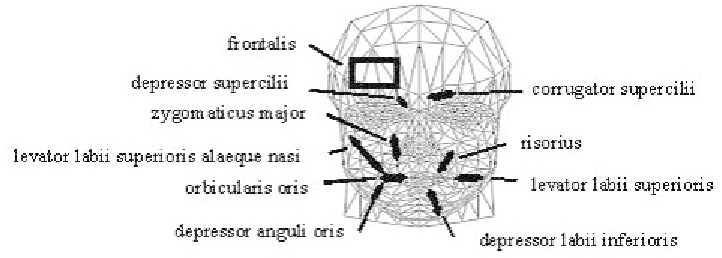Game Development Reference
In-Depth Information
Figure 2. High complexity face model: Position of facial muscles.
addition to Fischl, Miller and Robinson (1993), additional facial animation
parameters are introduced. They describe the rotation of the jaw and the
movements of eyelids and irises.
Facial Feature Estimation
The estimation of facial features in the 2D facial images is the first part of the
face model adaptation algorithm. For the low complexity mode, eye and mouth
features are estimated (described in the next subsection). For the high complex-
ity mode, chin and cheek contours, eyebrow and nose features are additionally
estimated (described in the following subsection).
Eye and Mouth Features
The eye and mouth features are estimated by means of 2D eye and mouth
models. In the following, subscripts
r
,
l
,
u
,
o
stand for
right
,
left
,
upper
and
lower
, respectively.
2D eye model
The eye in a facial image is represented by a 2D eye model, shown in Figure 3,
and consists of a pair of parabolic curves
W
1
,
W
2
and a circle
W
3
(Yuille, Hallinan
& Cohen, 1992; Zhang, 1998).
h
is the pupil point and
r
the radius of the iris.
r



Search WWH ::

Custom Search